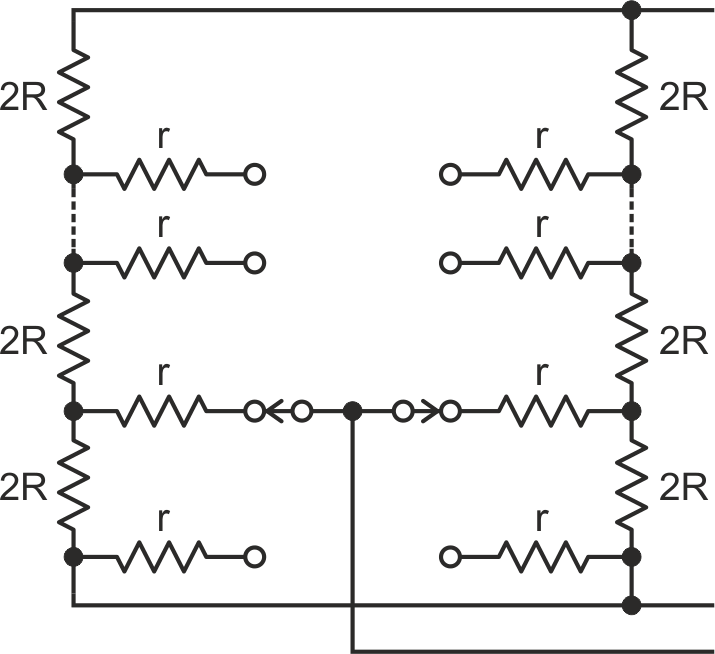A common problem for digital potentiometers (DigiPots) is the effect of wiper resistance, which produces quite noticeable non-linearities of regulation at both ends of the resistance range. These effects also lead to an increased tempco in these areas, since the high wiper resistance temperature coefficient will dominate.
Figure 1 is reproduced from Figure 4-6 on the datasheet for the “Digital Potentiometer MCP41xxx/42xxx” (Microchip, DS11195C, page 15). The absolute gain response is quite typical, so it is repeated as a good illustration. The circuit uses the DigiPot as a gain control element, the green line is added to show the ideal gain control.
 |
|
| Figure 1. | Gain versus decimal code for inverting and differential amplifier circuits (red line) reproduced from Digital Potentiometer MCP41xxx/42xxx and ideal gain control (green line). |
Now, let’s see how we can reduce the influence of the wiper resistance on both ends of the resistive element.
A solution shown in Figure 2 exploits the fact that wiper resistance of a DigiPot isn’t related with its nominal total resistance. The idea is quite simple and straightforward: two DigiPots from the same chip are connected abreast. (Both DigiPots must be programmed with the same code.) As shown in Figure 1, the absolute error – induced by a non-zero wiper resistance (r) – gets lower by value of r/2.
 |
|
| Figure 2. | A solution that reduces the errors of digital potentiometers by exploiting the fact that the wiper resistance of the DigiPot is not related to its nominal total resistance. |
The solution is more suitable for non-single DigiPots, since they can guarantee an acceptable resistor-matching.
The solution may be also beneficial for the Rheostat mode tempco and Rheostat INL error, where both can be reduced.
While the wiper resistance of a DigiPot isn’t related to its nominal resistance, the wiper resistance may increase when its nominal increases; this can destroy the advantages of the circuit, so it is important to be careful.
To maintain the same total resistance, both DigiPots should have 2x the nominal total resistance, which may be difficult to ensure sometimes, since the assortment of nominal values is rather restricted.
Note also that the larger nominal value of the DigiPot can lead to some reduction of the effective frequency range.